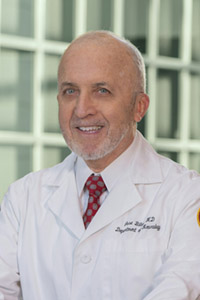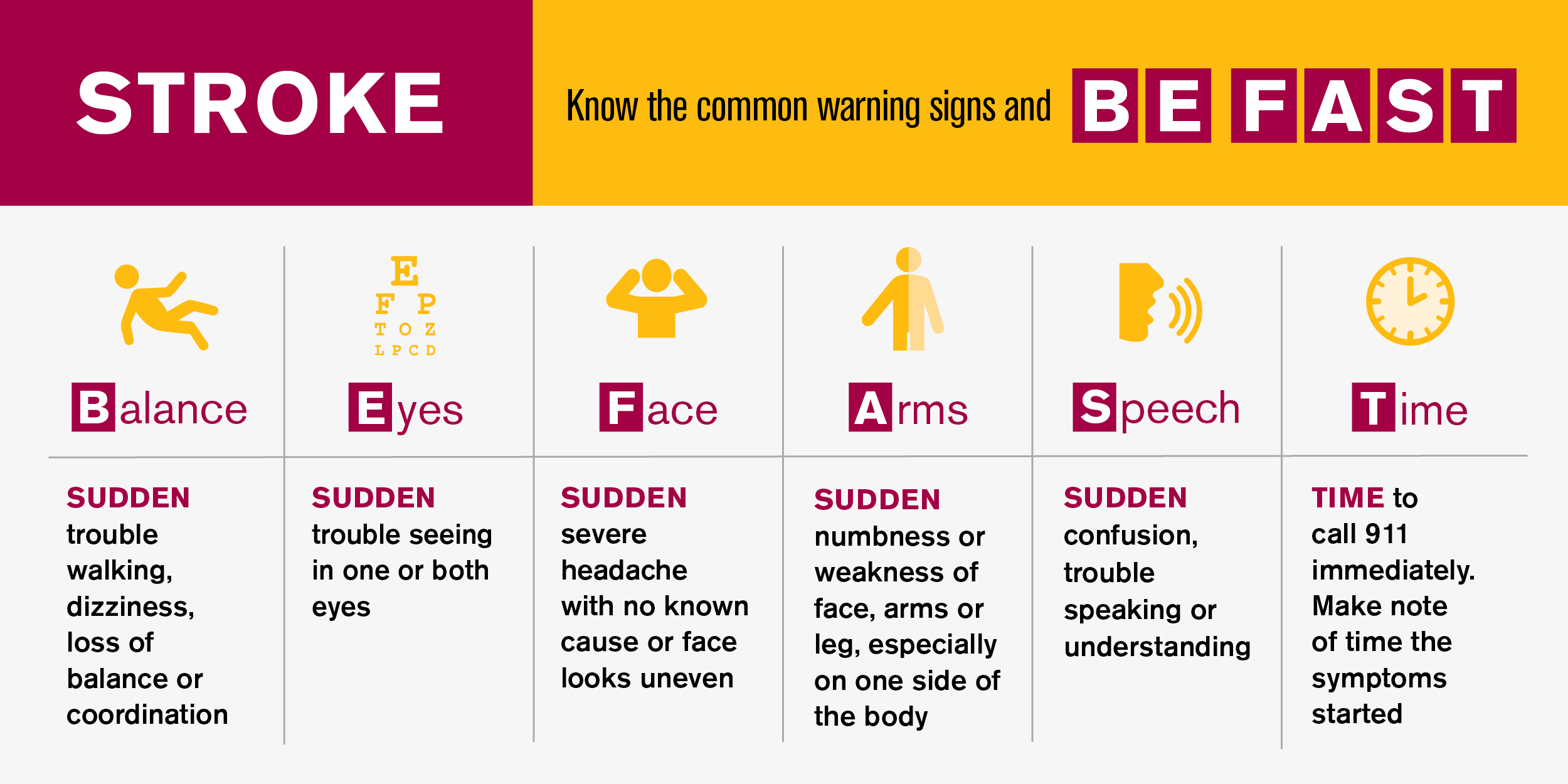Know the Signs of Stroke to Save Time, Save Brain
April 29, 2024Categories: Stroke, Neurology & Neurosurgery
 By José Biller, MD, FACP, FAAN, FANA, FAHA, Neurology
By José Biller, MD, FACP, FAAN, FANA, FAHA, Neurology
Stroke stands as a formidable challenge within the U.S., affecting approximately 795,000 individuals annually, either as a new or recurrent event. It ranks as the second leading cause of death globally and the fifth in the United States. Beyond its mortality rate, stroke is a principal source of long-term disability among adults. The statistics are striking: a stroke occurs every 40 seconds, and every four minutes, a stroke claims a life in the U.S.
What is a stroke and what are the different types?
A stroke occurs when the brain's blood supply is interrupted, resulting in potential brain damage. Strokes can be classified into two major types:
- Ischemic Strokes: These occur due to blood clots that obstruct the flow of blood to the brain.
- Hemorrhagic Strokes: These are caused by ruptured blood vessels which lead to bleeding either within the brain or between the brain and the skull.
What are the symptoms of a stroke?
The ability to recognize the signs of a stroke can dramatically influence the outcome. Key symptoms include:
- Sudden severe headache
- Weakness or numbness, particularly on one side of the body
- Difficulty with speech or comprehension
- Unexpected problems with balance or coordination
- Sudden dizziness or vertigo
- Double vision
If you need an easy way to remember the symptoms of a stroke, the acronym B.E. F.A.S.T. offers a quick reference to identify potential strokes:

Why is swift response to a stroke so important?
When it comes to treatment, time is of the essence. The period immediately following the onset of stroke symptoms is often referred to as the "golden hour." Quick response during this critical window can significantly influence the extent of recovery and reduce the likelihood of long-term disabilities.
Impact of delayed treatment
Delays in treatment can lead to a cascade of irreversible neurological damage. As the brain is deprived of oxygen and essential nutrients (due to blocked or burst blood vessels), brain cells begin to die at a rapid rate.
- For every minute a stroke goes untreated, roughly 1.9 million neurons and 14 billion synapses are lost. This loss can result in permanent brain damage, disability, or death.
- Patients who receive clot-busting drugs within three hours of their first symptom often have less disability three months after a stroke than those who received delayed care.
Benefits of immediate medical intervention
Immediate medical intervention can drastically improve outcomes. Treatments such as thrombolysis (using drugs to dissolve clots) and thrombectomy (mechanical clot removal) are most effective when performed as soon as possible after a stroke begins. Here’s why rapid treatment is crucial:
- Early action reduces the risk of death. Research has shown that patients treated within the first three hours have a significantly higher survival rate compared to those whose treatment is delayed.
- Quick response not only saves lives but also enhances the quality of life post-stroke by minimizing brain damage and maximizing the recovery of functions.
The effectiveness of stroke treatment is also dependent on the readiness and swift actions of both community and health care systems. Public education on recognizing stroke symptoms and the importance of immediate 911 calls can facilitate faster medical responses. Additionally, health care systems equipped with stroke response protocols, like those at Loyola Medicine’s Comprehensive Stroke Center, ensure that patients receive the fastest and most effective treatments available.
Stroke prevention and care at Loyola Medicine
Loyola Medicine's Stroke Center is recognized for its excellence, holding accreditation from The Joint Commission as a Comprehensive Stroke Center. The center is lauded for its commitment to superior care, evidenced by its receipt of the American Stroke Association's Get with the Guidelines® - Stroke Gold Plus Quality Achievement Award. This recognition speaks to Loyola's dedication to advancing diagnosis, treatment, and rehabilitation standards for stroke patients.
As an academic medical center, Loyola provides compassionate, exceptional care to patients and trains future leaders in neurology and neurosurgery. The Stroke Center and neuro intensive care unit are staffed by dedicated neurologists, hospitalists and Magnet-status nurses.
For those considering further stroke treatment or seeking a second opinion, Loyola offers specialized consultations through its Second Opinion Stroke Clinic.
José Biller, MD, is a neurologist with a long-standing expertise in stroke and other cerebrovascular disorders practicing at Loyola Medicine. He is the Chair of Neurology at Loyola University Chicago Stritch School of Medicine. Dr. Biller is board certified in neurology, vascular neurology (stroke) and headache medicine.
Book an appointment today to see Dr. Biller or any of Loyola's expert neurologists by calling (708) 216-6006 option 1 or self-scheduling an in-person appointment using myLoyola.
